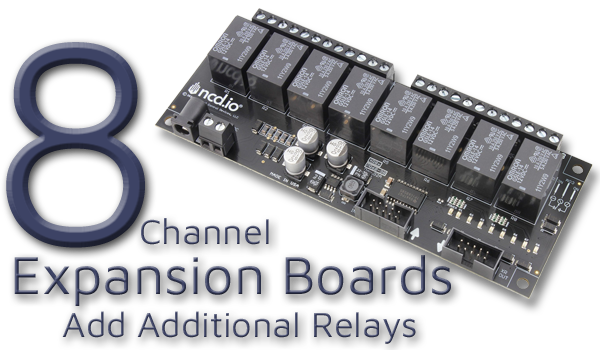
Expansion Boards at a Glance...
- 8 Relays Installed on a Circuit Board
- XR Input and Output Connectors
- 2.1mm and Screw Terminal Power Connectors
- On-Board Power and Relay Status LEDs - Add Relays to
- ProXR Boards
- Time Activated Taralist Boards - Onboard XR Expansion Ports
- Plugs Into XR Expansion Port
- Daisy Chain Expansion Boards Together
- Control up to 256 Total Relays
- 6" Ribbon Cable Included - Expansion Boards DO NOT Operate on Their Own
Selecting the Proper Amperage
For more information on selecting a board with the correct relay amperage for your application see Choosing a Proper Amperage.






